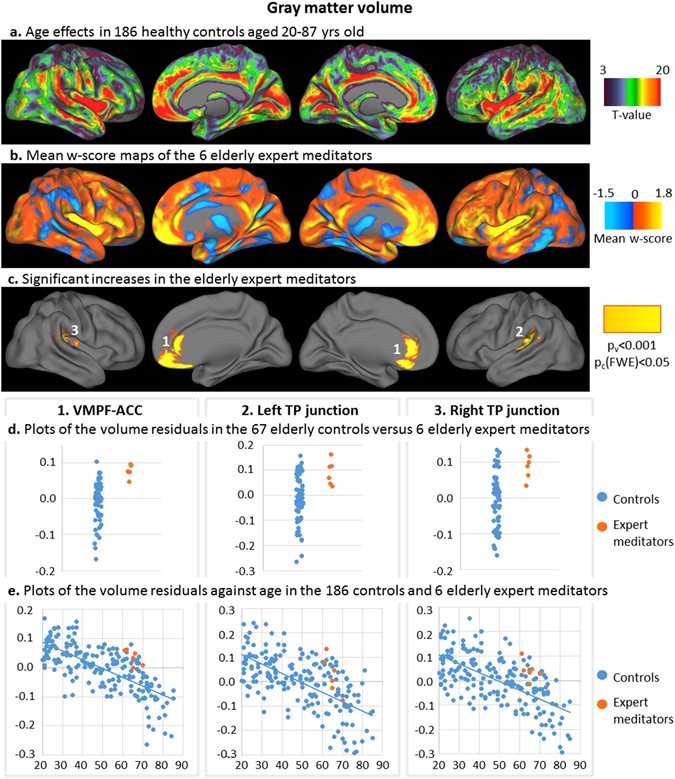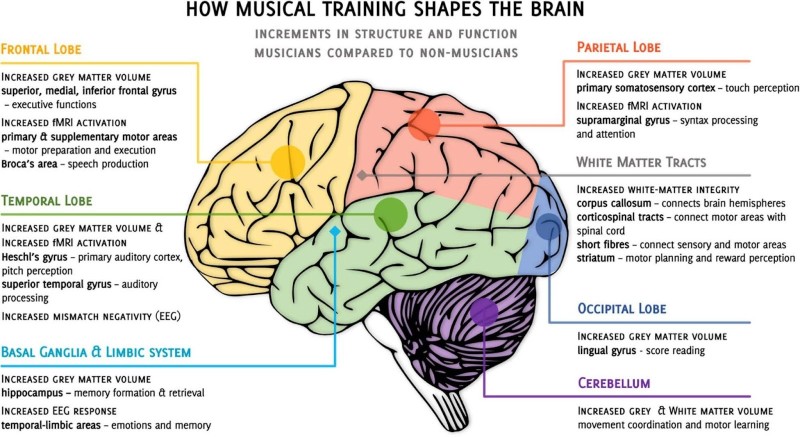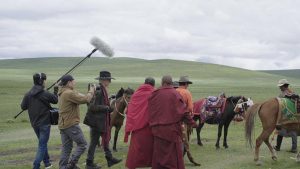
Understanding the unity of phenomena, experiencing and conceptualizing the great continuum, and perceiving the fabric of reality and the connectivity underlying all things are motivating factors for scientific inquiry as well as for other fundamental truth-seeking practices. Attempting to grasp reality and truth in their entirety often requires coming to terms with paradoxes and may result in subtle changes in physiology and cognition.
The physicist Richard Fynman won a Nobel prize together with Sin-Itiro Tomonaga and Julian Schwinger for their work in quantum electrodynamics with implications for the physics of elementary particles. In his award speech, Fynman said:
For today all physicists know from studying Einstein and Bohr, that sometimes an idea which looks completely paradoxical at first, if analyzed to completion in all detail and in experimental situations, may, in fact, not be paradoxical.
(The Nobel Prize)
The search for a scientific understanding of the unity of phenomena inevitably rests on the study of physics and mathematics as these are considered foundational sciences.* Yet the spectrum of science is very broad, ranging from theoretical physics, which studies the phenomena that underlie all things, to particular fields concerned with more narrowly defined phenomena.
What is often referred to as scientific enlightenment can, however, be rather circular. As the contemporary philosopher Nicholas Maxwell wrote in Karl Popper, Science and Enlightenment (UCL Press 2017): “We do not know that the universe is comprehensible. This is a conjecture. Even if it is comprehensible, almost certainly it is not comprehensible in the way science presupposes it is today.” (x)
Scientific and technical advances can be seen as manifestations of enlightened consciousness, and spiritual and scientific pursuits are not fully separate—although, for some reason in our times they ended up into different departments.**
A more philosophical and experiential path toward understanding the unity of phenomena is found in Buddhists schools of thought concerned with universality and absoluteness, such as Dzogchen and Mahamudra. Here, to enable the shift of consciousness required for increased levels of awareness necessary to grasp increasingly expanded worldviews, some changes happen in the body and mind of practitioners.

For example, research studies have revealed that some of these changes have manifested in a thicker corpus callosum and a thicker cortex, as in the examples provided in previous articles in this column.*** It is interesting to compare similar manifestations—the thickening, reshaping, and re-organization of some areas of the brain for example, in individuals performing other activities, such as research or PhD work.
Considering that meditative practices can shape brain morphology, it is interesting to examine and catalogue various other mental practices, such as learning the violin or other forms of music, that have similar effects.****

One study, for example, focusing on fluid reasoning—a component of performance IQ that is highly correlated with academic performance and commonly measured by the matrix reasoning test—showed that this activity relies on a distributed frontoparietal network, with the rostrolateral prefrontal cortex (RLPFC) playing a specific role in relational reasoning:
In an exploratory analysis, we asked whether relationships between fluid reasoning and cortical structure differed by SES [socio-economic status] in early childhood. This analysis led to specific predictions about where and how cortical thickness relates to reasoning differently by SES, which we then tested in an independent sample of adolescents. *****
Interestingly, thicker bilateral RLPFC positively correlated with reasoning ability in children from lower-SES backgrounds, but not in children from higher-SES backgrounds, adding a further twist to the hypothesis.
It is said that buddhahood is the pinnacle of enlightenment and that ultimate realization can consist of pure and simple letting go of the ego, of developing love and compassion. At the same time, practices such as advanced concentration can lead to certain developments in the neuro-cognitive apparatus, thus expanding the level of consciousness. Tangible manifestations of the experiences of the ultimate state of awareness that can be examined by science are of interest to many scientists and researchers who are also Buddhist practitioners.
My previous articles have considered how—given novel advances in technology and greater scientific understanding of how the mind works—manifestations of dynamic cognition could be detected by neuroscience, and how this could be relevant to mindfulness practices and the Dharma. We have already seen how some studies show possible correlations between the evolution of consciousness, the development of the cortex , the corpus callosum, and mental activities of meditative practices.******
In the absence of a comprehensive theory of enlightenment, experimental results remain tentative and notional, pointing to a need for further research in that direction. Taking steps toward a scientific theory of enlightenment can begin with reviewing the wealth of interdisciplinary literature that documents tangible, physical phenomena associated with buddhahood and enlightenment.
We are very fortunate that in our times much precious literature is becoming accessible that illustrates in detail the enlightenment practices that have traditionally been reserved for initiates. For example, an article by Ian Baker, “Embodying Enlightenment: Physical Culture in Dzogchen as revealed in Tibet’s Lukhang Murals”, has recently become available online. Baker writes:
While Dzogchen is commonly perceived, and presented, as pertaining principally to the reflexive ‘self-liberating’ potential of the mind, its practice is traditionally infused by physical exercises that push the body—and thereby consciousness—beyond conventional limits and constraints. Dzogchen’s body-oriented approach to the realisation of habitually dormant perceptual and existential capacities is vividly portrayed in diagram like images which describe pro-somatic practices (rtsa rlung ’khrul ’khor ) which facilitate the realisation of the mind’s inherent ‘Buddha Nature’ (Skt:tathāgatagarbha ).
(225)
The article suggests that while the “innate perfection” of Dzogchen can, as tradition upholds, be directly cognized without any modification of mind or body, it is more commonly a consequence of intensive qigong and hatha yoga exercises.
In Tibet, such practices have been preserved to the present day. There they were perfected and realized in great yogic traditions through different lineages. However, the practices and the philosophical ideas behind them originated in regions currently associated with India and the Far East.
I will continue to address the continuum that is inherent to scientific and spiritual inquiry in future articles, as the knowledge emerging from scientific research provides clear pointers toward a possible general theory of enlightenment that is begging to be formulated.
* The Mystery at the Heart of Physics That Only Math Can Solve (Quanta Magazine)
** Eureka! Songs about realisation, discovery and enlightenment (Song Bar)
*** More About the Neuroscience of Enlightenment (Buddhistdoor Global), Spirituality in the Brain (Buddhistdoor Global), Neuroscience Meets Abhidharma (Buddhistdoor Global)
**** Jäncke, Lutz. 2009. Music drives brain plasticity. Biology Reports. 1:78 https://www.ncbi.nlm.nih.gov/pmc/articles/PMC2948283/ and Coro, Gianpaolo and Masetti Giulio. 2019. Distinguishing Violinists and Pianists Based on Their Brain Signals. Artificial Neural Networks and Machine Learning – ICANN 2019: Theoretical Neural Computation. pp.123-137 https://www.researchgate.net/publication/335699468_Distinguishing_Violinists_and_Pianists_Based_on_Their_Brain_Signals
***** Leonard, Julia A. et al. 2019. “Associations between cortical thickness and reasoning differ by socioeconomic status in development.” Developmental Cognitive Neuroscience. Vol. 36 https://www.sciencedirect.com/science/article/pii/S1878929318300586
***** On Dharma, Ethics, and Evolution (Buddhistdoor Global), Duality, Dharma, and the Brain (Buddhistdoor Global)
References
Maxwell, Nicholas. 2017. Karl Popper, Science and Enlightenment. London: UCL Press.
Baker, Ian. 2012. “Embodying Enlightenment: Physical Culture in Dzogchen as revealed in Tibet’s Lukhang Murals.” Asian Medicine. 7. Pp.225–64. https://www.academia.edu/10139448/Embodying_Enlightenment_Physical_Culture_in_Dzogchen_as_revealed_in_Tibet_s_Lukhang_Murals
See more
Richard P. Feynman Biographical (The Nobel Prize)
Related features from BDG
Beginner’s Mind: A Renewed Sense of Life – Revelations through Buddhist Material Culture
Dwelling in the Heart of Reality: An Interview with B. Alan Wallace
Dzogchen: The Non-Conceptual Path to Liberation
Science and the Rainbow Body, Part 4: Uniting Polarities of Life and Mind













Just a note of caution. One of the basic insights of buddhist teaching is that grasping at or clinging to anything at all, including enlightenment, will lead to dukkha. Both wisdom and compassion together with a spotless ethical and moral foundation are required for any progress to be made. Here is the difference between the often ego driven pursuit of science and the selfless study of buddhist teachings.
Thank you Ian, The suggestion here is that increased dharma awareness of could lead to a selfless pursuit of science, towards an enlightened scientific practice, so to speak